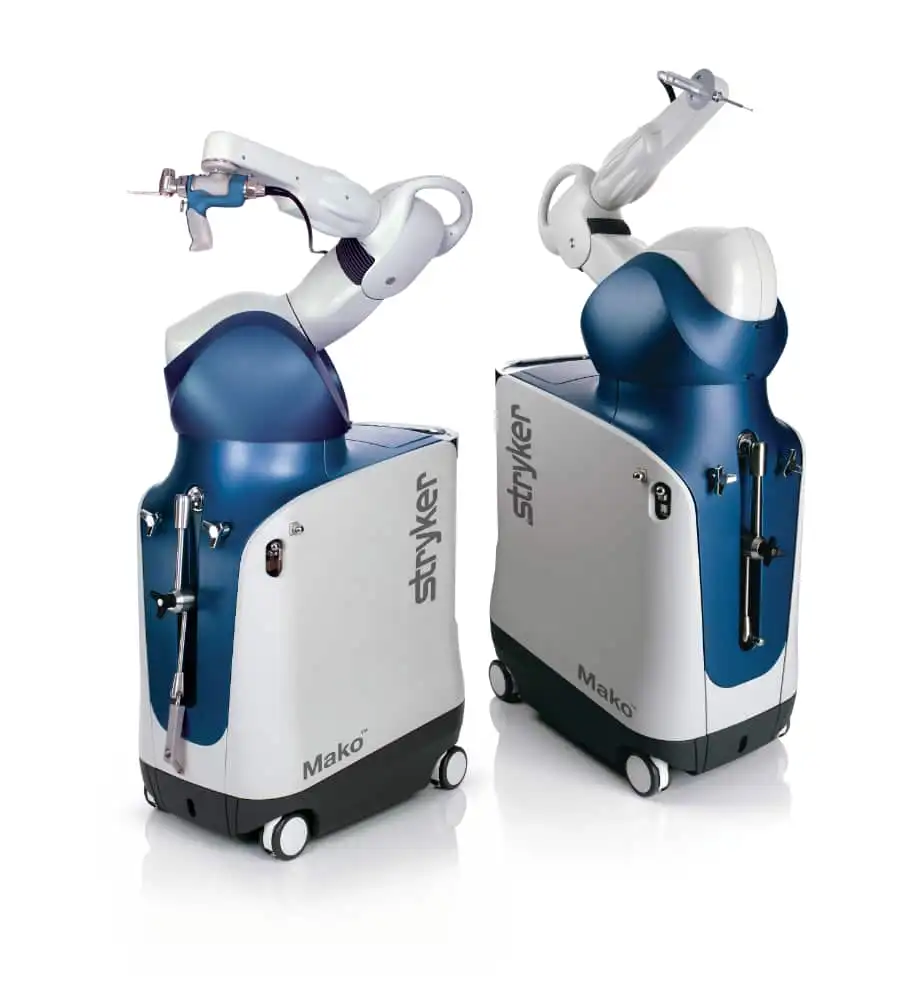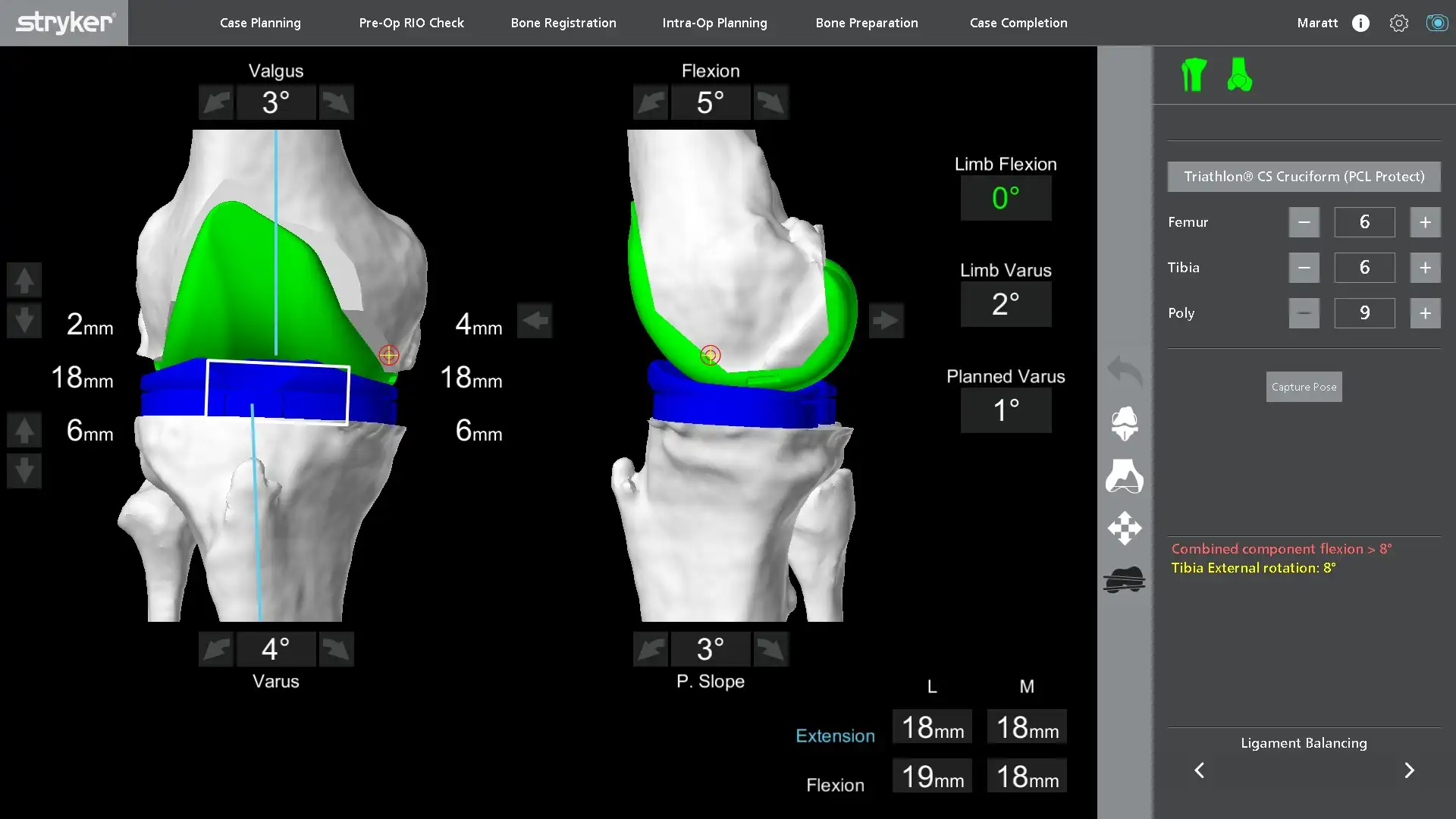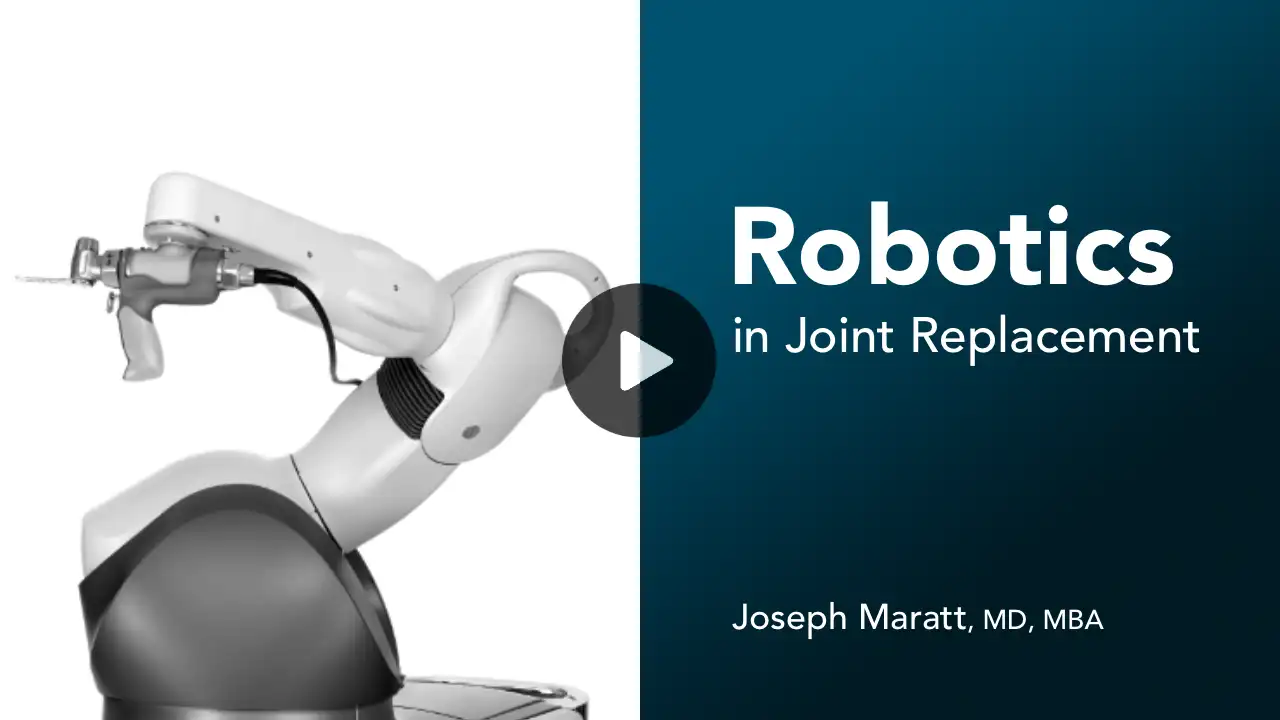
Knee arthritis can make everyday activities difficult to perform. If non-surgical treatments aren’t effective, surgery may be your best option to relieve knee pain and stiffness.
What is Robot Assisted Knee Replacement?
During knee replacement, the damaged bone and cartilage of the knee is removed, and resurfaced with metal and plastic implants. These components reconstruct the knee joint surfaces. To make space for the metal and plastic implants, bone needs to be cut and shaped in several places. Using the Stryker Mako robotic-arm during knee replacement allows us to pre-plan your surgery on a 3D model and more precisely remove bone and cartilage.
Why is it used?
The preparation of bone and position of the implants in knee replacement is really important. Well positioned implants result in a knee replacement that feels better, more natural and is easier to recover from. During a robot assisted knee replacement, we can see how the replaced knee joint will move on the computer, make adjustments as needed to the pre-plan to make sure the knee is properly balanced and be confident in the end result before starting to make any bone cuts. It goes back to the old adage from carpentry: "Measure Twice, Cut Once."
How does it work?
It starts a few weeks before your surgery date with a CT scan of your leg. Using the information from this CT scan, a 3D model of the knee is made on which we can see the shape of the bones and bone spurs that need to be removed during the surgery. On this model, we can precisely position the knee replacement to resurface the knee and make up for any worn cartilage or bone.

On the day of surgery, the navigation camera is shown a set of points on the knee which it matches to the 3D model. At that point, the robotic system knows where the knee is and can see how it moves as the knee is taken through a range of motion. The surgical plan can then be fine tuned to make sure the ligaments around the knee are well balanced and then bone is removed. When the surgeon is using the robotic arm to make bone cuts, the software sets up a safe boundary to protect the tissues around the knee to add an extra layer of safety. Trial implants are then placed to make sure the reconstructed knee will move well before placing the real implants.
